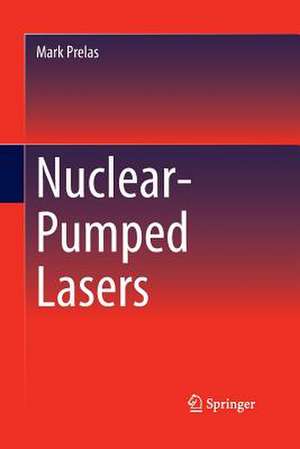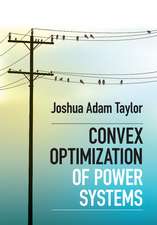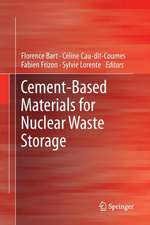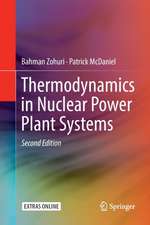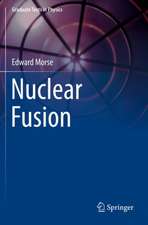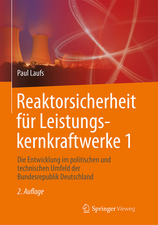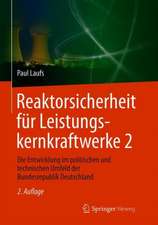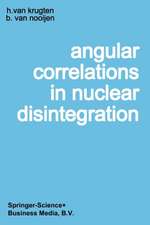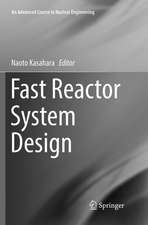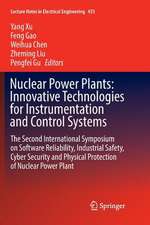Nuclear-Pumped Lasers
Autor Mark Prelasen Limba Engleză Paperback – 23 aug 2016
Early chapters look at the fundamental properties of lasers, nuclear-pumping and nuclear reactions that may be used as drivers for nuclear-pumped lasers. The book goes on to explore the efficient transport of energy from the ionizing radiation to the laser medium and then the operational characteristics of existing nuclear-pumped lasers. Models based on Mathematica, explanations and a tutorial all assist the reader’s understanding of this technology.
Later chapters consider the integration of the various systems involved in NPLs and the ways in which they can be used, including beyond the military agenda. As readers will discover, there are significant humanitarian applications for high energy/power lasers, such as deflecting asteroids, space propulsion, power transmission and mining.
This book will appeal to graduate students and scholars across diverse disciplines, including nuclear engineering, laser physics, quantum electronics, gaseous electronics, optics, photonics, space systems engineering, materials, thermodynamics, chemistry and physics.
| Toate formatele și edițiile | Preț | Express |
|---|---|---|
| Paperback (1) | 733.15 lei 6-8 săpt. | |
| Springer International Publishing – 23 aug 2016 | 733.15 lei 6-8 săpt. | |
| Hardback (1) | 1018.25 lei 3-5 săpt. | |
| Springer International Publishing – 28 noi 2015 | 1018.25 lei 3-5 săpt. |
Preț: 733.15 lei
Preț vechi: 894.09 lei
-18% Nou
Puncte Express: 1100
Preț estimativ în valută:
140.28€ • 146.86$ • 116.08£
140.28€ • 146.86$ • 116.08£
Carte tipărită la comandă
Livrare economică 05-19 aprilie
Preluare comenzi: 021 569.72.76
Specificații
ISBN-13: 9783319369136
ISBN-10: 331936913X
Pagini: 417
Ilustrații: XIV, 417 p.
Dimensiuni: 155 x 235 mm
Greutate: 0.6 kg
Ediția:Softcover reprint of the original 1st ed. 2016
Editura: Springer International Publishing
Colecția Springer
Locul publicării:Cham, Switzerland
ISBN-10: 331936913X
Pagini: 417
Ilustrații: XIV, 417 p.
Dimensiuni: 155 x 235 mm
Greutate: 0.6 kg
Ediția:Softcover reprint of the original 1st ed. 2016
Editura: Springer International Publishing
Colecția Springer
Locul publicării:Cham, Switzerland
Cuprins
1 Introduction to Nuclear-Pumped Lasers.- 2 Radiation Interaction With Matter.- 3 Direct Energy Conversion Principles as Applied to Lasers.- 4 Nuclear-Pumped Lasers.- 5 Reactor and Laser Coupling.- 6 Applications.- Appendix 1: Neutron Cross Sections from Neutron Resonance Parameters and Thermal Cross Sections.- Appendix 2: Plasma Basics.- Appendix 3: Maxwell Boltzmann Distribution Function.- Appendix 4: Thermal Neutron Cross Sections for Some Elements and Compounds (from Reactor Physics Constants ANL 5800 1963 for 2200 m/s Neutron Speed.
Notă biografică
Mark A. Prelas is a professor in the Electrical and Computer Engineering Department at the University of Missouri. Prelas received his doctorate from the University of Illinois. He has received numerous awards and recognition including being named a Presidential Young Investigator by the National Science Foundation in 1984, was a Gas Research Institute Fellow in 1981 working on the production of fuels from inorganic resources, was a Fulbright Fellow at the University of New South Wales in 1992, was named a fellow of the American Nuclear Society in 1999, was a William C. Foster Fellow with the U.S. Department of State in 1999-2000 where he served as a science adviser for the Bureau of Arms Control, and he received the Glenn Murphy Award from the American Society for Engineering Education in 2009 for his contributions to nuclear engineering education and research. He has also served as the senior scientist on a Strategic Defense Initiative project at the Idaho National Laboratory in 1987. In 2008 he was awarded the Frederick Joliot-Curie Medal from the Government of Russia and the Board of ISJAEE for his contributions to the field of direct energy conversion and his pioneering work on the development of photovoltaic cells from wide band-gap materials.
Textul de pe ultima copertă
This book focuses on Nuclear-Pumped Laser (NPL) technology and provides the reader with a fundamental understanding of NPLs, a review of research in the field, and exploration of large scale NPL system design and applications.
Early chapters look at the fundamental properties of lasers, nuclear-pumping and nuclear reactions that may be used as drivers for nuclear-pumped lasers. The book goes on to explore the efficient transport of energy from the ionizing radiation to the laser medium and then the operational characteristics of existing nuclear-pumped lasers. Models based on Mathematica, explanations and a tutorial all assist the reader’s understanding of this technology.
Later chapters consider the integration of the various systems involved in NPLs and the ways in which they can be used, including beyond the military agenda. As readers will discover, there are significant humanitarian applications for high energy/power lasers, such as deflecting asteroids, space propulsion, power transmission and mining.
This book will appeal to graduate students and scholars across diverse disciplines, including nuclear engineering, laser physics, quantum electronics, gaseous electronics, optics, photonics, space systems engineering, materials, thermodynamics, chemistry and physics.
Early chapters look at the fundamental properties of lasers, nuclear-pumping and nuclear reactions that may be used as drivers for nuclear-pumped lasers. The book goes on to explore the efficient transport of energy from the ionizing radiation to the laser medium and then the operational characteristics of existing nuclear-pumped lasers. Models based on Mathematica, explanations and a tutorial all assist the reader’s understanding of this technology.
Later chapters consider the integration of the various systems involved in NPLs and the ways in which they can be used, including beyond the military agenda. As readers will discover, there are significant humanitarian applications for high energy/power lasers, such as deflecting asteroids, space propulsion, power transmission and mining.
This book will appeal to graduate students and scholars across diverse disciplines, including nuclear engineering, laser physics, quantum electronics, gaseous electronics, optics, photonics, space systems engineering, materials, thermodynamics, chemistry and physics.
Caracteristici
Supports understanding of the kinetics and dynamics of nuclear-pumped lasers through models Provides a tutorial on the interaction of ionizing radiation with matter (ions, electrons, gamma rays and neutrons) Explores the concept of using high temperature nuclear reactors as a power source for a large scale thermally driven carbon dioxide laser
